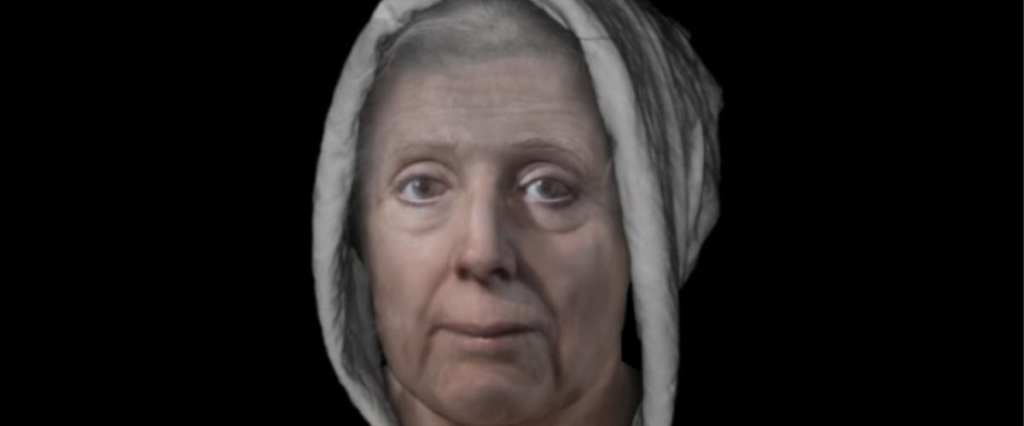In the 18th century, a woman was accused of witchcraft. She died in prison while awaiting her trial, and since everyone in town was convinced of her guilt and feared her unnatural return from the dead, she was buried beneath a large, stone slab.
It happened in 1704, in a town called Torryburn on Scotland’s southwest coast. Her name was Lilias Adie, and she was accused by her neighbor of summoning Satan and casting spells.
This is a facial reconstruction, done by historians and scientists at the University of Dundee.
https://www.instagram.com/p/B2JCJQjBcWd/
Lilias, a woman in her 60s, was tortured and interrogated in prison until she broke down and publicly confessed to her crimes, which included having sex with the devil himself.
The purpose of her treatment, aside from earning her confession (true or not) was to get the names of more “witches,” who would then be subjected to the same treatment.
Lilias, though, spent her time inventing elaborate ceremonies that involved only masked women – women she couldn’t identify, of course, so no glory for the investigators.
“I think she was a very clever and inventive person,” commented historian Louise Yeoman.
“The point of the interrogation and its cruelties was to get names. Lilias said that she couldn’t give the names of other women at the witches’ gatherings as they were masked like gentlewomen. She only gave names which were already known and kept coming up with good reasons for not identifying other women for this horrendous treatment – despite the fact it would probably mean there was no let-up for her.”
https://www.instagram.com/p/BbCeo7JHofw/
Around 1500 women were strangled and burned at the stake in Scotland between 1590 and 1706, all suspected “witches,” but Lilias Adie wasn’t one of them. She’s suspected to have committed suicide in prison, and she was subsequently buried between the high and low tide mark under a heavy, flat stone.
The fact that she killed herself, coupled with their belief in her supernatural powers, would have led people to believe she could and would return to haunt the living.
Her head and bones were dug up by locals around 100 years later, and her skull was sold to St. Andrew’s University Museum in the early 20th century – before the whole lot went missing again.
https://www.instagram.com/p/B11V9L6A1yQ/
The town government is now searching for her remains so that she can finally be respectfully and peacefully laid to rest, says Kate Stewart, a councilor from WestFife and Coastal Villages.
“Lilias is not forgotten, she has never been forgotten. We need to get her back. This has been a great injustice and we need to reverse that.”
The modern people of Scotland, like many cultures around the world, now recognize the historical periods of hunting and burning “witches” as a shameful time in our collective histories.
“It’s important to recognize that Lilias Adie and the thousands of other men and women accused of witchcraft in early modern Scotland were not the evil people history has portrayed them to be, but were the innocent victims of unenlightened times. It’s time we recognized the injustice served upon them.”
So say we all.
At least, we should be, and it’s only fair that these people get the endings they always deserved – even if they’re coming a few centuries late.






